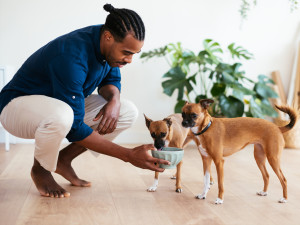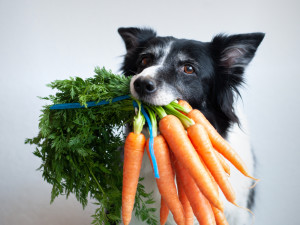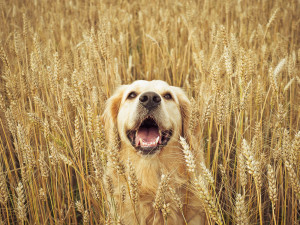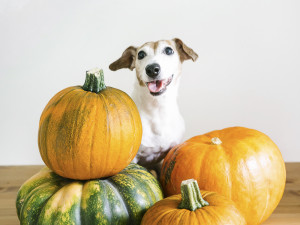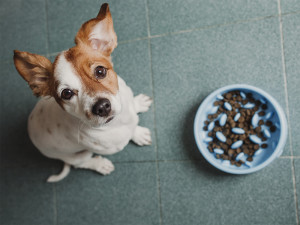How You Can Easily Manage Your Dog’s Weight
Keep your pup’s weight down, and you could add years to their life. What’s better than that?
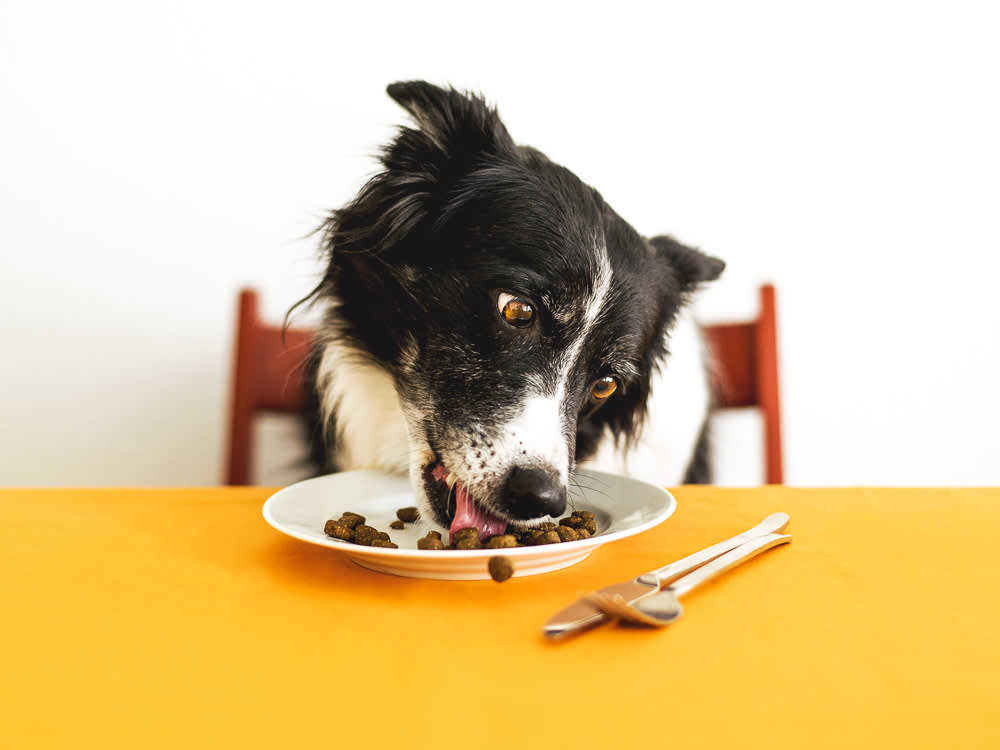
Share Article
Like so many pet parents, I am in a constant battle to keep my dog at a healthy weight. There are many things that can make a weight loss (or weight maintenance) programme difficult, but for me, it’s saying no to those pleading puppy-dog eyes. How can I not share a bite of whatever it is I’m eating? But here’s the thing: overfeeding your dog can lead to obesity, which is linked to a host of serious health issues including type two diabetes, heart disease, arthritis, joint problems and cancer. As a result, dogs who are overweight or obese tend to have shorter lives than those who maintain a normal weight.
There are countless recommendations, formulations and opinions about how to help your dog lose weight, but I have found the approach below to be the most effective. It is straightforward, it doesn’t require a change in their normal food and it allows for tasty treats to reduce their feelings of hunger. Best of all, I have found that it works well for most dogs. Here’s how you can determine your dog’s daily calorie needs and how to adjust their food intake to help them lose weight. Plus, a few pro tips for how to make them feel less miserable in the process.
How many calories should my dog have each day?
When starting a weight-loss programme for your dog, this is the first thing you need to figure out. Food ‘guess-timations’ are frequently incorrect because you may be judging how much to feed your dog based on how hungry they appear to you. This is not the best indicator of calorie needs, because let’s face it: your dog will always tell you they’re hungry. Animals also have a basic, instinctual drive to look at us whenever we are eating, which we interpret as hunger, leading to overfeeding.
Determining calorie intake needs
There are many formulas for determining your dog’s daily caloric intake, which are known as Resting Energy Requirements (RER), but I find this one to be the easiest to calculate: daily calorie needs = 30 x [your pet’s weight in kilograms] + 70.
For example, if your pet weighs 15kg, the calculation would look like this:
[30 x 15] + 70 = 520 calories per day.
Once you know how many calories your dog needs, check the label on their dog food bag to see how many calories are in a serving size. That way, you can make sure you’re feeding them the correct number of calories each day.
How to help your dog lose weight
I prefer the ‘low and slow’ approach to weight loss, which will be more sustainable for your dog in the long run. Here are the exact steps you need to take:
1. Feed based on RER calories
Simply feeding the calculated RER calories alone should be enough to reduce your dog’s weight over time. With this approach, most dogs will typically lose 500g–1kg per month. The best thing about this approach is that you don’t have to change their diet or buy an expensive prescription weight-loss formula.
2. Continue until an ideal body weight is achieved
If there is no significant weight loss after one to two months on their calculated RER, then I recommend cutting back your dog’s total calories by 10 percent (most veterinary nutritionists recommend a 10–20 percent calorie cutback). Continue to reweigh your dog every four weeks and continue to decrease the total calorie intake by an additional 10 percent until your dog’s ideal body weight is reached.
3. Maintain feeding based on RER calories
When they have finally reached their ideal body weight, simply continue to feed that amount of dog food daily, as long as they continue to maintain this ideal weight (meaning, no further weight loss or gain).
How to ease the pain when helping your dog lose weight
Put lunch on the menu
If it’s possible with your schedule, divide the total daily calories into three feedings, instead of two. You will basically be introducing a lunch into their breakfast and dinner schedule, helping to reduce feelings of hunger between feedings.
Give your dog healthy treats
When your dog gives you that look, give them a low-calorie treat, such as carrots or green beans. When my dogs are acting extra hungry, I give them a cupful of canned green beans, which leaves them feeling full (and happy that they scored a treat) without adding many calories. This trick also works great if or when you need to decrease the food amount by 10 percent – just add in a big scoop of the green beans as ‘filler’ each time you cut back the food. And because the calories are so minimal, you can get away with not having to calculate them into their daily calorie needs.
An example of a healthy weight loss programme for your dog
Month 1:
I have a 15kg dog, which equates to 520 calories per day. I will feed this amount for one month and reweigh at that time.
I offer as many low-calorie treats as needed (a scoop of green beans in the food, a carrot treat, etc).
Month 2:
My pet has lost 600g – yay!
Next step: continue with 520 calories per day.
Month 3:
No further weight loss is noted, and I have not yet reached my pet’s ideal weight.
Next step: reduce the calories by 10 percent, feeding 52 calories less per day for a total of 468 calories. Continue this for a month.
Month 4:
My pet lost 900g!
Next step: continue at 486 calories and reweigh in one month.
One final note: these recommendations assume that you have a healthy dog. If you have an older dog, I recommend you have a physical exam performed by your vet as well as blood tests to make sure there are no underlying metabolic problems, such as hypothyroid disease or Cushing’s disease, which can be the source of weight gain or an inability to lose weight.
This information is not meant to be a substitute for veterinary care. Always follow the instructions provided by your vet.

Dr. Shea Cox, DVM, CVPP, CHPV
Dr. Shea Cox is the founder of BluePearl Pet Hospice and is a global leader in animal hospice and palliative care. With a focus on technology, innovation and education, her efforts are changing the end-of-life landscape in veterinary medicine.
Related articles
![Dog biting into a bunch of carrots]()
How to Give Your Dog the Vitamins and Minerals They Need
Your pup needs their greens, too
![Dog Sitting In A Field]()
8 Superseeds to Add to Your Dog’s Diet
From chia to pumpkin, seeds pack a major nutritional punch
Can Dogs Eat Pumpkin?
Yep! The superfood is a delicious natural remedy for diarrhoea and constipation
![Puppy looks up while sitting next to a puzzle toy with food.]()
Tips to Slow Down a Dog Who Eats Too Fast
Eating fast is more than just unsightly – it’s potentially dangerous
![Puppy eating a bowl of blueberries]()
10 Superfoods to Share With Your Dog
From kale to quinoa, these nutrient-packed picks deserve a spot in your dog’s food bowl

